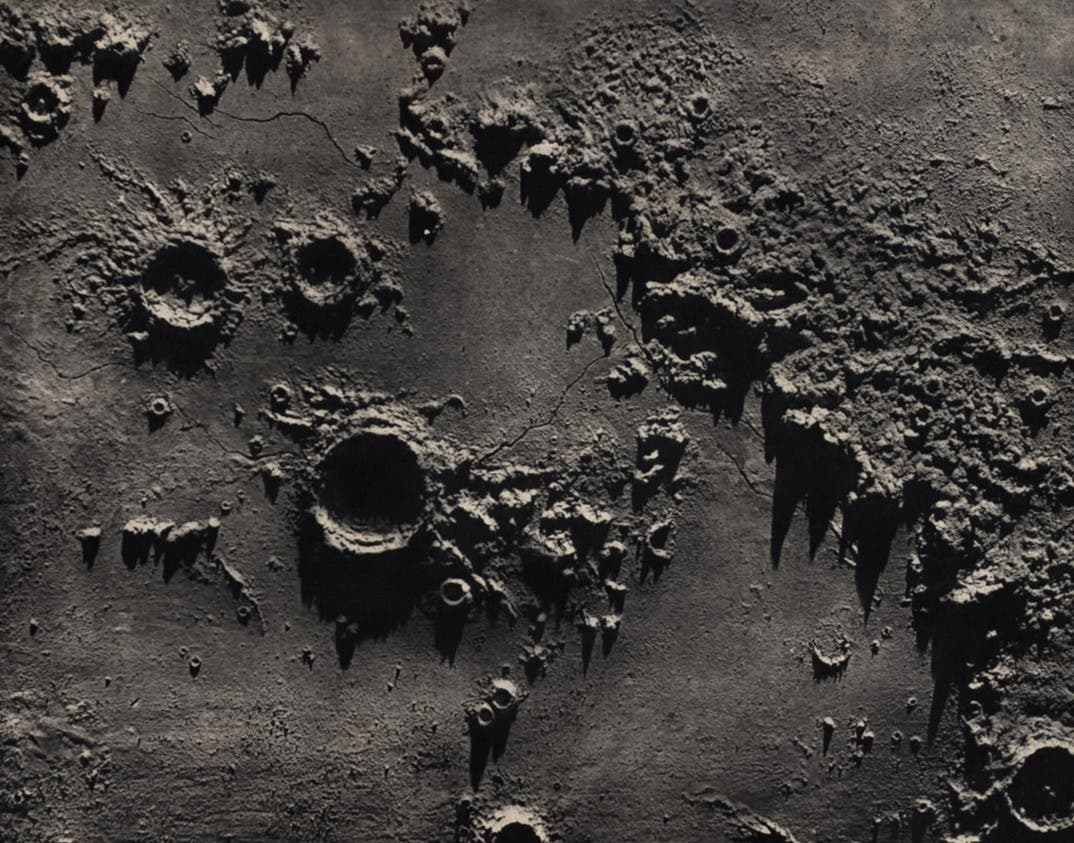Nasmyth, James Hall (1808-1890); and Carpenter, James (1840-1899).
The Moon: Considered as a Planet, a World, and a Satellite. Second edition. – London: John Murray, 1874.
Nasmyth was brought up in an artistic family, made a fortune as a manufacturer and inventor, and retired to take up astronomy. He built his own 20" reflector in 1842 (inventing the Nasmyth focus in the process), and began to concentrate on lunar studies. Nasmyth brought photography to the aid of selenography in an unusual manner. Since photography was not yet advanced enough to take photographs of lunar details, Nasmyth constructed plaster models based on visual observations, and then photographed the models. For this book, the photographs were then printed by the arduous Woodburytype process, perhaps the most faithful method ever devised for the reproduction of photographs. The Woodburytype has no grain whatsoever, because it does not use cracks or dots to reproduce tone. Instead, a relief mold is made of the image in lead, so that the areas of dark tone are deep and light tone shallow. Ink suspended in gelatin is cast in the mold, and the resulting print produces contrast by the thickness or thinness of the ink.

